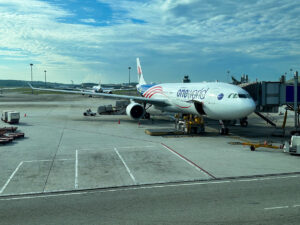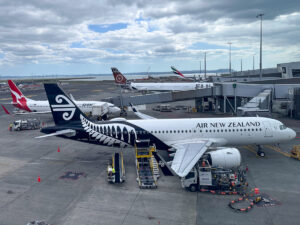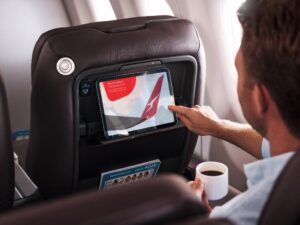
In 2009, the Australian Tax Office (ATO) began accepting payments by credit card. For the first time, this meant Australians could earn frequent flyer points through their credit cards for paying their tax bills.
AFF’s ATO (tax office) payments by credit card thread now has well over 9,000 posts from members discussing the loophole and sharing their tips. To say this has been a popular way to earn frequent flyer points for the past decade – after all, many Australians have to pay tax anyway – would be an understatemet. In fact, one AFF member has earned 100 million frequent flyer points since 2009 using this method!
The ATO has always charged a small card payment sucharge. But, in most cases, the frequent flyer points that could be earned for the credit card spend have more than justified that expense. By paying tax with a points-earning credit card, Australian frequent flyers have earned millions and millions of points at a relatively low cost.
Unfortunately, this isn’t always profitable for the banks as they earn relatively low interchange fees on government payments. So, one by one, the banks started reducing or eliminating the ability to earn frequent flyer points for tax and HECS payments.
Since Bankwest stopped awarding points for ATO transactions in May 2019, St George and its affiliated banks were the last ones standing. But sadly, St George too will finally stop awarding points on government payments from 9 December 2020. The last bank standing has called time.
A short history of earning points for credit card tax payments
Back in 2009, there were basically no restrictions on earning frequent flyer points for payments to the government. Those were the “good old days”. But after a few years, one by one, the dominoes started falling.
Citibank was one of the first banks to stop awarding points for tax payments in 2013. In Australia, Citibank also issues credit cards for Virgin Money and Suncorp, so they were out too.
But the cuts really began to take hold from late 2014, with Westpac becoming the first of the “big 4” Australian banks to eliminate points for ATO transactions. NAB came soon after in May 2015, followed by CommBank in November 2015 and ANZ Bank in February 2016.
For a while, there were still plenty of other options beyond the major banks. But these too started drying up. In May 2016, Macquarie Bank (which also issues cards on behalf of Woolworths and Jetstar) stopped awarding points for ATO payments. Then Qudos Bank stopped in December of that year.
For a while, the Coles Rewards Mastercard became the best credit card for tax payments. It had a low annual fee and earned 2 flybuys points per dollar spent at the ATO, with no cap. Then, in 2018 that card became part of Citigroup and – you guessed it – stopped awarding points for tax payments.
Bankwest then stopped awarding points for tax payments in May 2019 leaving St George, Bank of Melbourne and Bank SA as the sole survivors.
Some cards still award reduced points for tax payments
The good news is that it’s still possible to earn frequent flyer points for credit card tax payments in Australia. It’s just less lucrative than before.
CommBank and NAB business credit cards continue to award points for tax payments. So too do Westpac business credit cards, albeit at very low rates.
Many American Express credit cards also continue to provide points for government payments. But most Amex cards award points only at a reduced rate, which is not worthwhile when you consider the much higher card payment surcharge when paying the ATO with Amex.
The rise of bill payment services
While the number of credit cards issuing points for government transactions has steadily declined, the number of new businesses offering bill payment solutions has steadily increased.
Although the value proposition decreased somewhat after the great Amex devalution of 2019, services like B2Bpay, RewardPay and Easy Bill Pay continue to offer a way to earn frequent flyer points when paying expenses that would not otherwise earn them – such as tax or super payments. These services charge a payment fee (typically around 2%) when you pay bills through them, but you’ll earn frequent flyer points as if it was a regular payment. If you have a particularly rewarding credit card, and don’t mind the payment surcharge, this could be somewhat worthwhile.
But if you want to earn points for tax payments, you’ll now effectively have to make a trade-off between a reduced points-earning rate or a higher payment surcharge. Until now, you could’ve got both a low surcharge and a high earn rate. Perhaps that was always too good to be true, but it sure was nice while it lasted!
Join the discussion on the Australian Frequent Flyer forum: ATO (tax office) payments by credit card
















































































